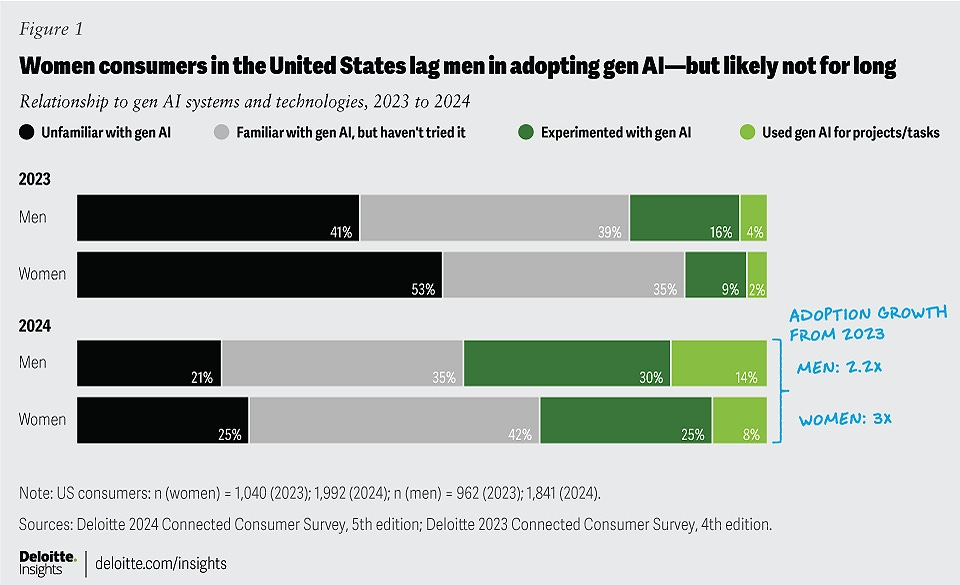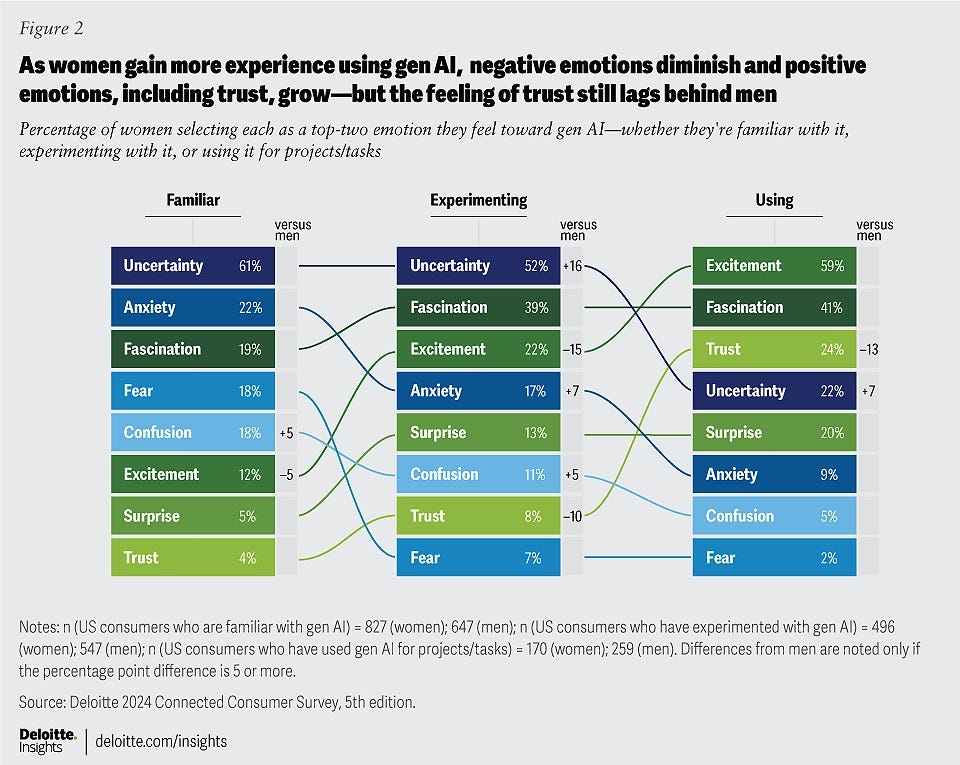It is common knowledge that Generative AI is rapidly transforming industries, reshaping workflows, and unlocking new opportunities for innovation. However, the adoption of this emerging technology has not been uniform across genders.
Recent research from Deloitte highlights a significant shift: women, who previously lagged behind men in generative AI usage, are quickly closing the gap and it is predicted that women's engagement with generative AI in the United States will match or even surpass that of men, by the end of 2025.

This trend is not limited to the U.S. Studies from the UK and across Europe also reveal a gender disparity in AI adoption but with a clear pattern of increasing participation among women. In 2023, women’s use of generative AI was about half that of men, but adoption has since surged so by 2024, while a gap still existed, the percentage of women experimenting with or using AI had grown substantially.
The rapid rise in women’s adoption of AI signals a broader shift in the tech landscape. As more women explore and integrate AI tools into their work, industries stand to benefit from diverse perspectives and inclusive innovation. Understanding the factors driving this change and addressing remaining barriers will be key to ensuring equal access and opportunities in the AI-driven future.
Deloitte predicts that women in the U.S. will adopt generative AI at the same rate as men by the end of 2025, despite initially lagging behind in 2023. Similar trends are emerging in European countries, where women are quickly closing the adoption gap. Globally, the challenges and opportunities in generative AI adoption are expected to reflect those seen in the U.S.
Deloitte's research shows that the gender gap in generative AI adoption is narrowing but still present. In the U.S., women's adoption of gen AI was half that of men in 2023 (11% vs. 20%).
By 2024, overall adoption had more than doubled, yet a gap remained (33% of women vs. 44% of men). Similar trends were observed in the UK and 12 other European countries, where men continue to adopt gen AI at higher rates, though women are quickly closing the gap.
While generative AI adoption among women is increasing, disparities in daily usage and perceived benefits remain. Deloitte’s 2024 Connected Consumer Survey found that 34% of women using generative AI engage with it daily, compared to 43% of men. Additionally, only 41% of women believe AI significantly enhances their productivity, whereas 61% of men share this sentiment. Organizations aiming to maximize AI’s impact must address these gaps.
A key factor influencing this disparity is trust. Women generally exhibit lower levels of trust in AI providers and higher levels of uncertainty compared to men. While familiarity with AI reduces negative emotions over time, trust levels among female users remain notably lower. Only 18% of women experimenting with AI express high confidence in data security, compared to 31% of men. Building trust through transparency, education, and security measures will be crucial in fostering equal AI engagement across genders.
Creating Inclusive AI Workplaces
After reviewing Deloitte’s findings, it is evident that increasing the diversity and inclusion of women in AI roles requires intentional efforts from companies so they should focus on cultivating work environments that address the specific needs of their employees. Research on women in AI has shown that work/life balance is a critical factor in job satisfaction, with key elements such as flexible schedules and remote work opportunities playing a major role. So if the companies and organizations provide these arrangements, it can lead to increase engagement, retention, and overall job satisfaction for women in AI.
Additionally, companies should emphasize transparency in pay and promotions while ensuring that women are well-represented in leadership roles. Studies indicate that women seek workplaces with strong female leadership, clear career advancement pathways, and zero-tolerance policies for harassment and abuse. By fostering an inclusive culture and implementing these structural changes, businesses can create an environment where women not only enter AI roles but also thrive and lead in the industry.




